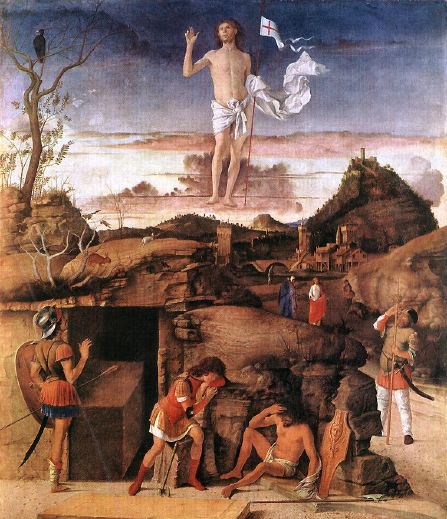Easter Sunday’s picture is Giovanni Bellini’s intensely beautiful and uplifting Resurrection. Now in the Gemaldegalerie in Berlin, it was originally commissioned by a Venetian aristocrat, Marco Zorzi, as the altarpiece of his family’s funerary chapel in the church of San Michele in Isola, a small island between Venice and Murano. On 5 June 1475, Zorzi received permission from the monks of the church “to have constructed a chapel in honour of … the glorious Virgin Mother Mary, in which he might build a tomb for his body and for the bodies of his heirs and successors ... and have erected an altar in honour of the glorious Virgin Mary.” He agreed to pay for “all the things and ornaments needed for celebration of Mass and all other divine offices” and to provide for Masses to be said there, for the benefit of his soul and those of his relations, after his death. At some point before 1479, when all the work was complete, Zorzi must have changed his mind about the dedication of the altar, instructing Bellini to paint not the Virgin Mary but, instead, Christ rising from the sepulchre. It was an appropriate subject, given the setting. The painting’s message of radiant hope – “Death, where is thy sting?” – would have come across all the more pointedly in a burial chapel.
Renaissance painters tackling the theme of the Resurrection had little guidance from scripture, where the moment itself is not described, only its aftermath. (Christ’s subsequent reappearances to the disciples are more fully fleshed out, which explains the greater popularity, in Christian art, of subjects such like the supper at Emmaus.) For many hundreds of years the Church discouraged the portrayal of the Resurrection altogether, its earliest appearance in Italian art occurring as late...


